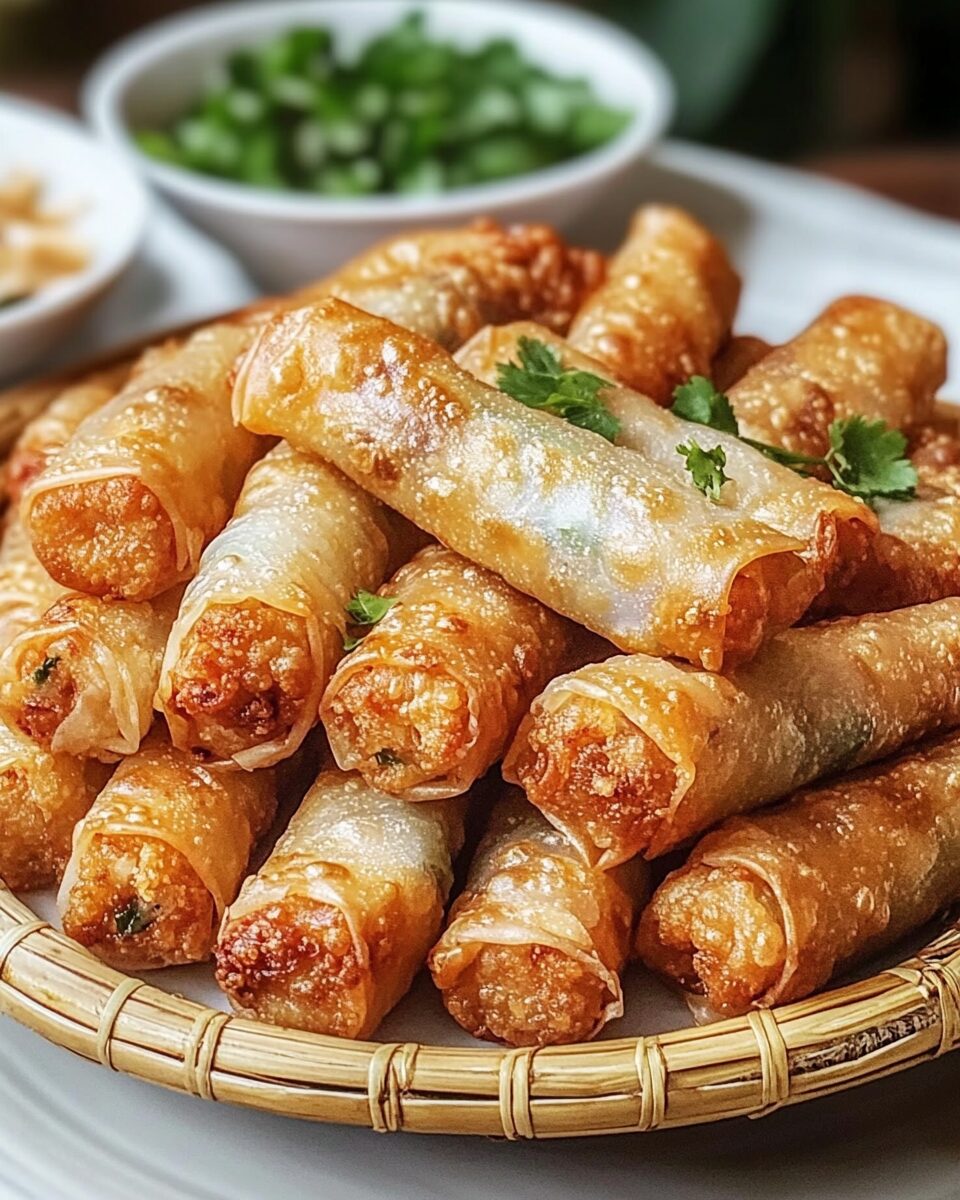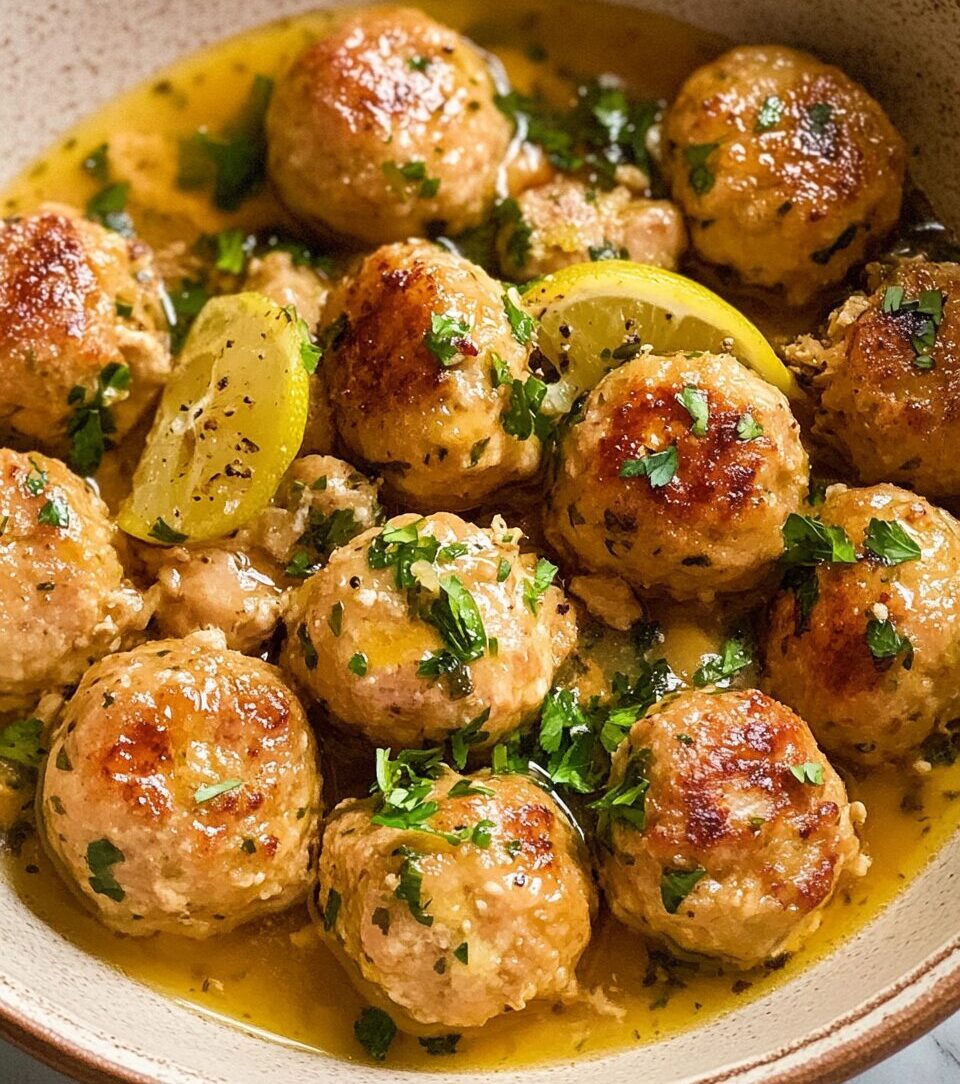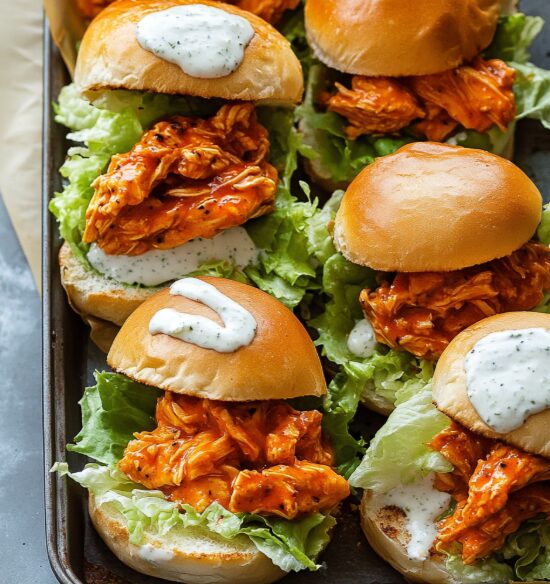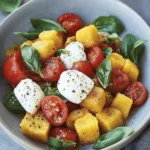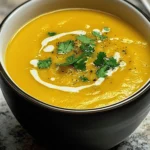The crispy Vietnamese Spring Roll, also known as Nem Rán or Chả Giò, is a beloved staple in Vietnamese cuisine. These golden delights are packed with a savory mixture of ground pork, mushrooms, carrots, and glass noodles, all tightly wrapped in delicate rice paper and fried to perfection.
Paired with fresh herbs and a tangy nước chấm dipping sauce, these spring rolls offer a delicious contrast between crispy exteriors and tender, juicy fillings. Whether served as an appetizer, a party snack, or the centerpiece of a festive Vietnamese meal, they bring joy and flavor to every bite. Try them fresh and hot, straight from the pan—your guests won’t stop at one!
Full Recipe:
-
1 pound ground pork
-
1 large carrot, grated
-
1 onion, finely chopped
-
2 ounces vermicelli noodles, soaked and chopped
-
1 ounce wood ear mushrooms, soaked and finely chopped
-
2 eggs
-
2 tablespoons fish sauce
-
1 teaspoon ground black pepper
-
1 package rice paper wrappers
-
Vegetable oil for frying
Directions:
-
In a large mixing bowl, combine the ground pork, grated carrot, chopped onion, chopped vermicelli noodles, wood ear mushrooms, eggs, fish sauce, and black pepper. Mix thoroughly until well incorporated.
-
Fill a large bowl with warm water. Dip one rice paper wrapper into the water for about 5 seconds to soften. Lay it flat on a clean surface.
-
Place about 2 tablespoons of filling near the center of the wrapper. Fold the sides over and roll tightly like a burrito to enclose the filling. Repeat with remaining wrappers and filling.
-
Heat about 1 inch of vegetable oil in a frying pan over medium-high heat.
-
Fry the spring rolls in batches, turning occasionally, until golden brown and crispy (about 5–7 minutes). Drain on paper towels.
-
Serve with dipping sauce (nước chấm) and fresh herbs.
Prep Time: 25 minutes | Cooking Time: 20 minutes | Total Time: 45 minutes
Kcal: 290 kcal | Servings: 6 servings
Cultural Roots of Vietnamese Spring Rolls
Vietnamese Spring Rolls, known locally as Nem Rán in the North and Chả Giò in the South, are a hallmark of Vietnamese cuisine. These deep-fried delights have a long and rich cultural history tied to family traditions, celebrations, and the daily rhythm of life across Vietnam. They often appear during Tet (Vietnamese Lunar New Year), weddings, festivals, and communal gatherings, symbolizing prosperity and togetherness.
Their origin is debated—some culinary historians trace influences to Chinese spring rolls, while others insist that the Vietnamese variety evolved independently with regional ingredients and flavor profiles. Regardless of their inception, Nem Rán is now globally recognized and loved for its crispy texture, flavorful filling, and distinctive dipping sauce.
Key Characteristics That Make It Unique
What sets Vietnamese spring rolls apart from other Asian spring rolls is the use of rice paper wrappers (called bánh tráng), instead of wheat-based ones. When fried, these wrappers become blistered and shatteringly crisp, offering a unique texture that differs from their Chinese or Thai counterparts. Inside, the filling is a balanced mix of textures and flavors—commonly combining ground pork, wood ear mushrooms, glass noodles (vermicelli), onions, and carrots.
The freshness of the ingredients and the complexity of the seasoning—enhanced with fish sauce, pepper, and sometimes a touch of sugar—make every bite rich but never overwhelming. Served hot and often accompanied by a bowl of nước chấm (a tangy-sweet dipping sauce with garlic, lime, and chili), Nem Rán delivers a multi-sensory culinary experience.
Regional Variations in Vietnam
Vietnam’s geography plays a huge role in shaping its food culture, and Nem Rán is no exception. In the North, they are referred to as Nem Rán and typically maintain a traditional and restrained flavor profile. These rolls may include fewer herbs and spices, letting the pork and mushroom flavors shine.
In the South, known as Chả Giò, the dish tends to be more colorful and bold. Southern rolls often incorporate additional ingredients like taro or jicama for extra crunch and natural sweetness. They are also usually served with a larger variety of fresh herbs and leafy greens, making the eating experience more dynamic.
In central Vietnam, the spring rolls can include shrimp and other seafood due to the coastal influence, reflecting the rich maritime culture of regions like Hue and Da Nang.
Why Vietnamese Spring Rolls Are Globally Loved
There’s a reason Nem Rán has found its way onto restaurant menus around the world: it appeals to nearly every palate. The crispy exterior gives way to a moist and savory filling, offering satisfaction with each bite. It’s also a dish that encourages sharing, making it a favorite at parties and family meals.
Moreover, these spring rolls can be customized easily. While pork is traditional, modern recipes feature ground chicken, shrimp, tofu, or a blend of mushrooms and vegetables for vegetarian and vegan adaptations. It’s this flexibility and universal appeal that make Nem Rán not just a cultural icon in Vietnam but a global culinary favorite.
Traditional Serving Style
In Vietnam, spring rolls are rarely served on their own. Instead, they are presented as part of a balanced meal, accompanied by fresh herbs such as mint, cilantro, Thai basil, and lettuce. Diners often wrap each crispy roll in a lettuce leaf, along with herbs, before dipping it into nước chấm. This adds a refreshing contrast and coolness to the hot, fried rolls and helps balance the flavors.
A typical dipping sauce includes fish sauce, lime juice, water, sugar, minced garlic, and chili. It’s salty, sweet, sour, and spicy—all at once. This complex sauce is essential to the Vietnamese dining experience, heightening the flavor of each bite while cleansing the palate.
The Role of Nem Rán in Vietnamese Celebrations
Vietnamese people take pride in their culinary traditions, and dishes like Nem Rán are often passed down from generation to generation. During Tet, households will prepare dozens of these spring rolls in advance. It’s a labor of love, often involving multiple family members working together—chopping vegetables, soaking noodles, and wrapping the rolls one by one.
The rolls are stored uncooked in advance and then fried in batches during the celebration. They’re not just food—they’re part of a festive ritual and represent abundance and hospitality. Their golden color is also considered lucky, symbolizing wealth and success in the coming year.
Healthier Alternatives and Modern Adaptations
While traditional Nem Rán is deep-fried, modern cooks have developed healthier alternatives to accommodate dietary preferences. Air-frying or baking the rolls offers a lighter option while preserving much of the crunch and flavor. Gluten-free versions are also easily made using rice paper and gluten-free soy or tamari sauce instead of fish sauce.
Plant-based eaters have embraced vegan versions using tofu, shredded cabbage, glass noodles, and mushrooms. These adaptations still capture the essence of the original dish: a contrast of textures, a satisfying crunch, and the beloved dipping sauce.
Some chefs are also experimenting with fusion fillings—think curried chickpeas, cheese, or quinoa—to create cross-cultural variations. While purists may prefer the traditional version, these innovations ensure the dish remains relevant in a global, modern food culture.
Tips for Perfect Spring Rolls Every Time
Though they seem simple, getting Vietnamese spring rolls just right requires some technique. First, soaking the rice paper properly is crucial. Too little water and it remains stiff; too much, and it becomes sticky and fragile. A quick 5-second dip in warm water is usually sufficient.
The filling should be neither too wet nor too dry. Excess moisture can cause the rolls to burst during frying. Wrapping them tightly without overstuffing is another key detail, as it ensures even cooking and prevents oil absorption.
Lastly, the frying oil should be hot but not smoking. Maintaining a consistent temperature allows the rolls to turn golden brown without absorbing too much oil or burning.
How to Store and Reheat Leftovers
If you find yourself with leftover rolls, they can be stored in an airtight container in the refrigerator for up to 2 days. To reheat and maintain crispiness, avoid microwaving. Instead, use an oven, toaster oven, or air fryer at 350°F (175°C) for about 10 minutes. This ensures they retain their signature crunch.
Uncooked rolls can also be frozen. Place them on a baking sheet to freeze individually before transferring to a freezer bag. When ready to cook, fry them straight from frozen—just add a few extra minutes to the cooking time.
Pairings and Complements
To round out a meal featuring Nem Rán, consider serving them alongside Vietnamese noodle salads (Bún), jasmine rice, or a simple soup like Canh Chua (Vietnamese sour soup). These dishes offer refreshing and light complements to the rich, fried texture of the spring rolls.
Beverage-wise, jasmine tea, Vietnamese iced coffee (cà phê sữa đá), or a crisp lager pairs beautifully with the complex, savory profile of the dish. If you’re feeling adventurous, try pairing with a dry white wine like Sauvignon Blanc or a light, citrusy Riesling.
Conclusion: A True Icon of Vietnamese Cuisine
Vietnamese Spring Rolls (Nem Rán or Chả Giò) are far more than just an appetizer—they are a celebration of texture, flavor, and tradition. Crispy on the outside, savory and juicy on the inside, they embody everything people love about Vietnamese cooking: freshness, balance, and an eye for detail.
Whether enjoyed as a street food snack, a party favorite, or a cherished family recipe during the holidays, Nem Rán holds a place of honor in Vietnamese hearts and on dining tables worldwide. With a little care and attention, they are surprisingly easy to make at home and offer an authentic taste of Vietnam’s rich culinary heritage.

